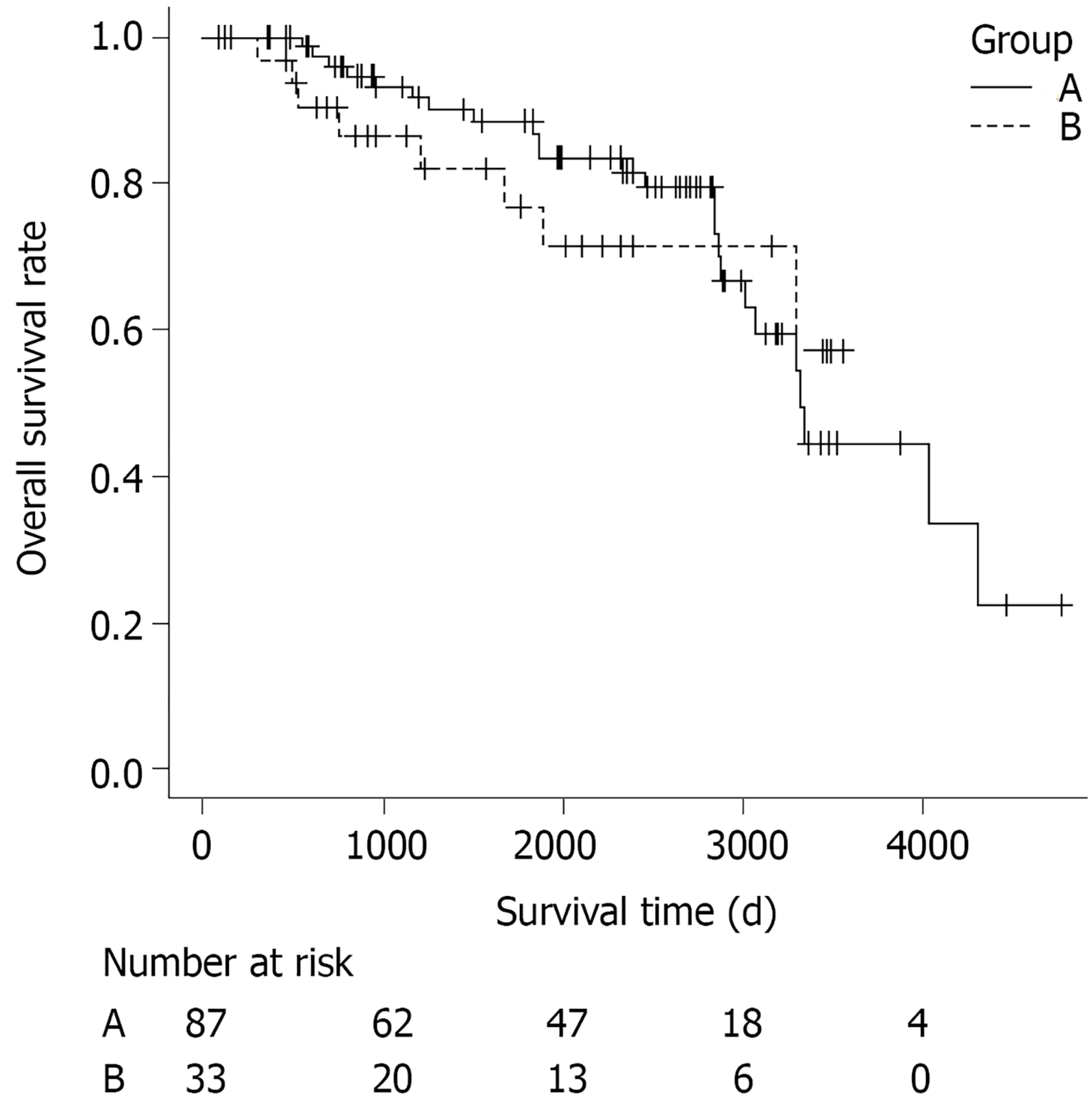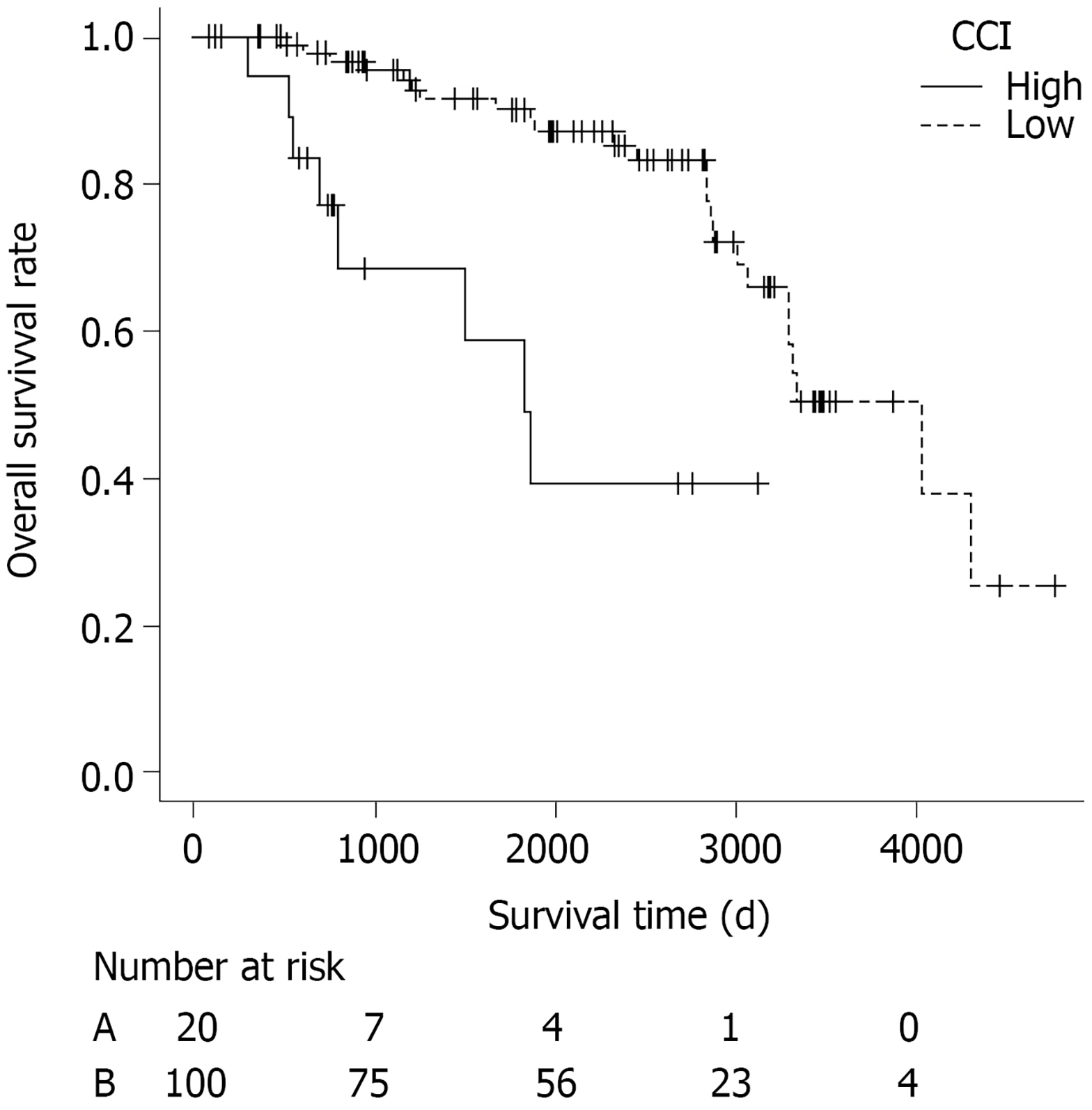Copyright
©The Author(s) 2022.
World J Gastrointest Endosc. Jan 16, 2022; 14(1): 49-62
Published online Jan 16, 2022. doi: 10.4253/wjge.v14.i1.49
Published online Jan 16, 2022. doi: 10.4253/wjge.v14.i1.49
Figure 1 Overall survival of curative and noncurative patients.
Group A: Curative endoscopic submucosal dissection (ESD) group (n = 87); Group B: Noncurative ESD group (n = 33). A total of 32 patients (26.7%) died during a median follow-up of 2005 d (range, 83-4774 d). Twenty-four of the patients who died were in the curative ESD group and eight were in the noncurative ESD group. The cause of death was gastric cancer in none of them. The overall survival rate did not differ significantly between the curative and noncurative ESD groups (P = 0.69).
Figure 2 Overall survival of patients with high and low Charlson comorbidity index.
Charlson comorbidity index (CCI) High: Patients with CCI ≥ 2 (n = 20); CCI Low: Patients with CCI ≤ 1 (n = 100). Overall survival rate was significantly different between the two groups (P < 0.001).
- Citation: Inokuchi Y, Ishida A, Hayashi K, Kaneta Y, Watanabe H, Kano K, Furuta M, Takahashi K, Fujikawa H, Yamada T, Yamamoto K, Machida N, Ogata T, Oshima T, Maeda S. Feasibility of gastric endoscopic submucosal dissection in elderly patients aged ≥ 80 years . World J Gastrointest Endosc 2022; 14(1): 49-62
- URL: https://www.wjgnet.com/1948-5190/full/v14/i1/49.htm
- DOI: https://dx.doi.org/10.4253/wjge.v14.i1.49










